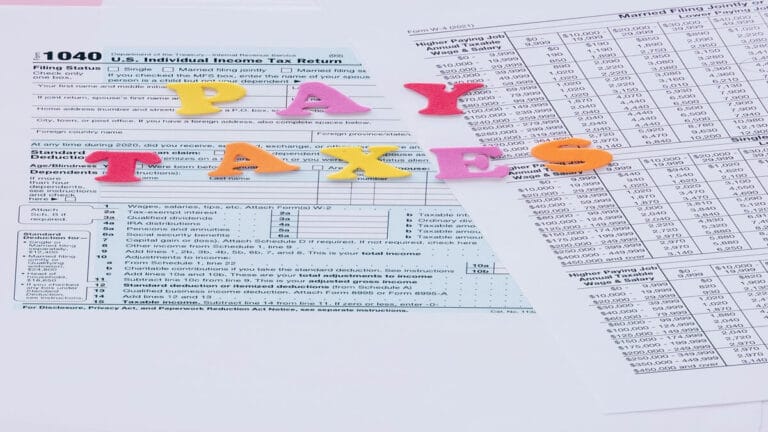How to save money with ₹20,000 salary in India

You are in a situation where most of your salary is eaten up by food, rent, and the purchase of necessary items, and your salary is also limited—around ₹20,000. It is really tough to manage a family, cover personal expenses, and also meet family expectations and needs. However, you can still save with proper planning and consistency. I am going to share with you a realistic and practical plan through which you can save, invest, and grow your money—even with a ₹20,000 salary.
Remember: It’s not about how much you earn, but how consistently you save and invest.
Contents
- 1 Step 1: Break Down Your salary ₹20000 as per 50-30-20 rule
- 2 Step 2: Build an emergency fund even on ₹20,000 salary
- 3 Step 3: Start Small investment to grow your money (Even on ₹20000 salary)
- 4 Step 4: Reduce daily expenses without scarifies
- 5 Step 5: Set Small, Realistic Goals
- 6 Bonus Hacks for ₹20000 Salary Earners
- 7 Conclusion
Step 1: Break Down Your salary ₹20000 as per 50-30-20 rule
You have fixed expenses on groceries, medicines, shopping, entertainment, rent, etc. But if you manage them with proper rationing, you can plan your savings effectively.
Try to fulfill your needs within 50% of your salary, then spend 30% on your wants, and allocate the remaining 20% towards savings and investments.
50% of Salary – Needs
- Rent: Around ₹4,500
- Groceries and Utilities: Around ₹3,500
- Transport: Around ₹1,000
- Medicines: Around ₹1,000
30% of Salary – Wants
- Eating Out: ₹1,500
- Shopping: ₹2,000
- Entertainment: ₹1,000
- Emergency or Needs-Based Expenses: ₹1,500
20% of Salary – Savings & Investments
- Emergency Fund: ₹1,000 – ₹1,500
- SIP in Mutual Funds: ₹2,000
- Gold Savings: ₹500 – ₹1,000 per month

Step 2: Build an emergency fund even on ₹20,000 salary
Human life is very unpredictable—anything can happen at any time. So, you should always be prepared for emergencies. If your family has aged members, then having an emergency fund is a must for you.
You should set a target of saving ₹60,000 to ₹80,000, which equals 3–4 months of your salary. You can build this through a savings bank account or a recurring deposit.
If you start saving ₹1,000 per month, after 5 years you will accumulate ₹60,000, along with interest from your savings account or recurring deposit. If you can invest ₹1,500 per month, then in 5 years you will accumulate around ₹75,000 along with additional returns.
Having an emergency fund means that in case of any unexpected situation, you won’t need to take a loan, use a credit card, or borrow money from others.
Initially, it may seem difficult to manage, but if you avoid withdrawing the money, you will gain confidence over time—especially when you see how much you’ve managed to accumulate.
Step 3: Start Small investment to grow your money (Even on ₹20000 salary)
One part of financial planning is building an emergency fund, and the other part is securing your future—whether it’s for yourself, your family, or even the next generations. If you follow proper planning and invest consistently, it is not impossible to become the owner of lakhs or even crores of rupees.
Start by investing in mutual funds through SIPs (Systematic Investment Plans), with a target of ₹1,500 to ₹2,000 per month. Choose large-cap or index funds—they are less risky and provide stable returns. Don’t expect very high returns immediately; this kind of investment becomes more valuable in the long run. Be consistent and stable with your limited, hard-earned money first. You can expect around 10–12% annual returns from these investments.
Then, go for digital gold or gold ETFs with a monthly investment of ₹500. This protects you against inflation and can be liquidated in case of emergencies. If you notice, gold prices are increasing day by day. Almost every year, the value of gold rises, making it a good long-term asset.
Next, plan for a Recurring Deposit (RD). You can invest ₹500 to ₹1,000 monthly. RDs give fixed returns and are good if you are saving for specific goals like buying hobby items, planning a wedding, or preparing for religious functions like a puja.
Step 4: Reduce daily expenses without scarifies
In the era of digitalisation, we all want to be smart and cool. However, when it comes to investment and savings, we often forget to apply that smartness. Why? Because we end up using our “smartness” in ways that hinder our savings and investments, just to keep up with new technologies.
Yes, you should use and stay updated with technology—but don’t sacrifice your future for it.
You may often order food from platforms like Zomato, Swiggy, or others. That’s okay if it happens rarely or in emergencies. However, if it becomes a habit, it’s time to stop. Start cooking at home—this can save you ₹2,000 to ₹3,000 per month.
Similarly, if you often use cabs, remember they are far more expensive than public transport. So, try to use public transport unless it’s an emergency.
No business runs without profit. Companies use attractive advertisements to make you spend. So, only buy things you truly need. Avoid subscribing to too many OTT platforms, gym memberships, apps, or online courses—only pay when it’s absolutely necessary.
Sometimes, bulk orders for groceries can give you discounts. Try to take advantage of such offers to reduce monthly expenses.
Even by cutting just ₹300 to ₹400 per month, you can save ₹3,600 to ₹4,800 annually
Step 5: Set Small, Realistic Goals
If you don’t have goals, you can get distracted easily. So, setting a goal is very important—whether it’s for work or investment.
Try to keep your targets slightly high. Even if you achieve a little less than your target, it will still be a good result. For example, aim to build an emergency fund of ₹50,000, and then focus on creating an investment corpus of ₹1 lakh in 3 years.
Set these financial goals and work steadily towards them.
Also, plan a 2-week trip every year—because happiness is important too. However, don’t take loans or use credit cards for such trips. Spend only from your savings to avoid debt and maintain financial peace.
Bonus Hacks for ₹20000 Salary Earners
Hacks are a second option—simple or additional tricks that can help. But remember, real results come from proper planning, perseverance, consistency, and the ability to adapt your plan when needed.
Hack 1: Use two bank accounts—one for expenses and the other for savings. Set up an automatic transfer to your savings account every month. This ensures that saving becomes a habit and not an afterthought.
Hack 2: Sometimes, you get cashback on online transactions through apps. Make use of these offers—they can help you save up to 5% of your total expenses over time.
Hack 3: Always focus on increasing your income through skill upgradation. As your income grows, adjust your investment plan accordingly.
Conclusion
Saving money with a ₹20000 salary is challenging, but not impossible. You can do it with proper planning.
Follow the 50-30-20 rule, cut unnecessary expenses, and start with small investments. This way, you can build financial stability and eventually grow your wealth.





